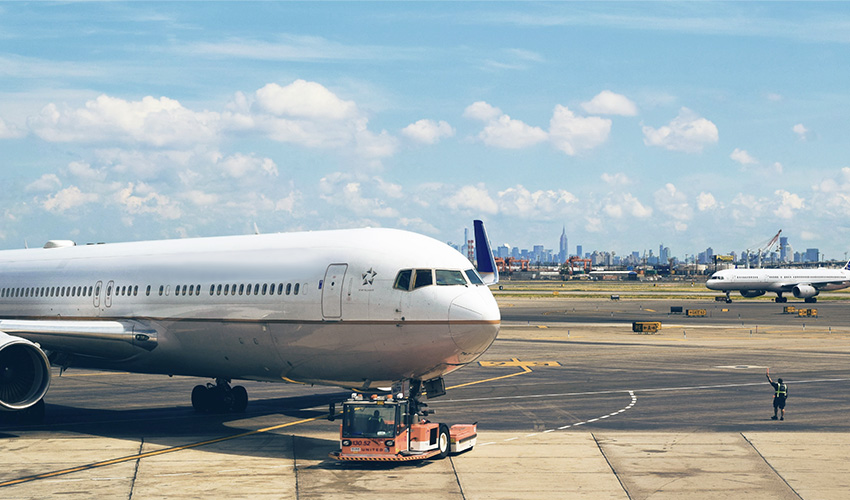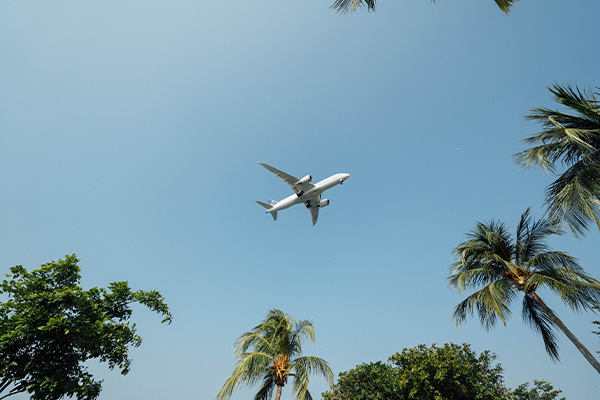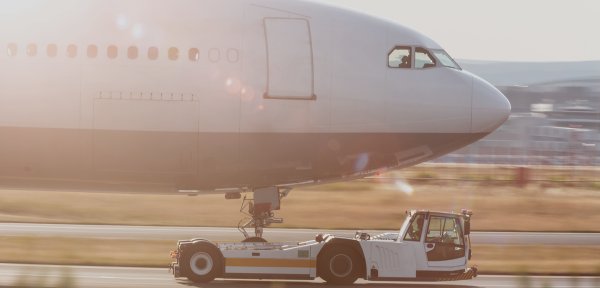We have come a long way since the start of the pandemic. One of the things that we have learned from this experience is that humanity was never prepared to face such enormous changes. Societies have been forced to re-evaluate their paradigms and put a stronger focus on building resilience. That is why two trends are set to gain major traction: digitalization and decarbonization. Emerging technologies are key to support the achievement of environmental goals which are crucial to rebound the global economy. Especially popular is artificial intelligence (AI), a powerful tool that airlines, airports, and ground handling companies are already deploying to create a profitable, efficient, and sustainable aviation.
Machine learning use cases within the air transport industry include baggage screening, passenger identification and predictive maintenance. Its advantages in terms of cost reduction, improved productivity, and on-time performance makes us expect that smart algorithms will be further widespread in the coming years. Artificial intelligence has demonstrated its potential to advance ground operations by optimizing, for instance, the dispatching of equipment. Therefore, it has great value within the implementation of green initiatives.
Harnessing artificial intelligence for a sustainable aviation recovery
Compared to other sectors like agriculture and energy, aviation accounts for a relatively small amount of the world´s CO2 emissions. In 2019, it was calculated to be 2.5%. But the yearly demand growth rate of nearly 5% in passenger flights between 2000 and 2019 suggested that emissions could triple by 2050. Even with the arrival of the Coronavirus, which put a halt to the sustained development of the sector, it is clear that more action is needed to reduce aviation’s environmental footprint.
Today, the industry is slowly recovering from last year´s 94.3% drop in traffic volumes. Forecasts suggest that by 2030, 50 million flights would take place, almost double of 2011 numbers. As international and domestic markets progress at a different pace, aviation stakeholders must prepare for efficiently ramping up operations. Part of this process is to redefine some of the crucial activities that take place on the apron.
1. Advancing maintenance prediction
Every year, airlines bear high costs due to flight delays and cancellations. That includes expenses on maintenance and compensations to passengers stuck in the airport. Findings show that nearly 30% of the total delay time is caused by unplanned maintenance. About 80% of these maintenance actions, however, can be prevented. Predictive analytics applied to fleet technical support appears to be a reasonable solution.
Some airlines are already using AI to foresee potential failures of aircraft maintenance and improve dependability. Moreover, dispatchers can anticipate when maintenance is really required, leading to a more optimal and timely allocation of the necessary resources. The result is less waste and higher productivity which is crucial for airlines to attain their sustainable aviation targets.
Smart algorithms also support the analysis of parameters indicating an airplane´s “wellbeing” in real-time. The improved monitoring of an aircraft’s technical conditions facilitates performing brisk fixes within much limited turnaround times. Since data is dissected more rapidly and precisely, maintenance tasks can be conducted based on how and when they should be finished. Here the use of innovative technology makes operations more simple and secure, while improving the user experience.


2. AI to manage ground support equipment
The Coronavirus has highlighted the importance of efficient management of ground support equipment (GSE). Solutions include not only an improved dispatching of GSE but also a greater use of electric, diesel-electric-hybrid and more recently autonomous vehicles. Software based on artificial intelligence help to optimize the tasks of planning and allocation of any equipment on the ground. With all the data processed smartly, decision-makers get full support for their daily activities. Catering vehicles, airport buses, loading/unloading equipment among others are then put into service only when required. As result, fuel consumption can be reduced, saving emissions. Other features include the assignment of vehicles following the shortest route and the prioritization of the most energy saving units.
Artificial intelligence can be complemented with other technologies already available on the market. The use of geofencing is key when time is tight since ground staff is not always aware of where to find the equipment needed. If a respective unit load device is missing at the aircraft, the dispatcher can retrieve the exact location of the dolly viewing where it is placed on his mobile device. The automated feed of GPS data on mobile airport maps helps prevent delays and time-consuming calls with the cargo department. Geofencing can also support monitoring the actual location of passenger buses. Then, with AI, predictions can be made regarding estimated arrival times of passengers which helps to maximize the use of the bus fleet.
3. Optimizing aircraft taxiing
Aircraft emissions are considered the main cause of air pollution at airports. The taxiway system is especially a major bottleneck between the runways and stands. With arriving airplanes moving around and waiting until they can get to the stand, jet fuel is just being wasted. Conventional taxiing involves using airplane engines at 100%; engines that are designed to optimally operate at cruising speed in the air rather than at low speed on the ground. With an adequate management tool for stands, operators can prevent longer taxiing times or even queues in these areas. In the planning phase, “what-if”-scenarios allow the creation and evaluation of alternative plans. On the operating day, stand assignment is continuously adapted based on current flight information.
Another way to improve taxiing is through the towing process. Some gateways are using hybrid or full electric towing vehicles. For an airport with operative dimensions like Schiphol, opting for these alternatives could potentially save 31 million liters of kerosene per year. In terms of sustainable aviation targets, it would represent a reduction of approximately 80 million tons of CO2 annually. A technology currently being explored is the so-called “Taxibot”. Pushback tags normally disconnect when an aircraft is being pushed away from a gate. The Taxibot. on the other hand, remains coupled until the aircraft is as close as possible to the runway. The vehicle simulates the movements made by the pilot, ensuring he has full control of airplane displacements. The implementation of such modern equipment could help save up to 85% of fuel.
Sustainable aviation: Now is the time to take more action
Whether opting for alternative fuels or reducing plastic by inflight food services, there are several ways to create more sustainable aviation. With traffic volumes expected to return to 2019 levels within a few years and continue to grow, the industry must start doing far more to decrease its climate impact. By adopting emerging technologies, companies can expand their operational awareness, automate their processes, maximize resource utilization, and improve their end-to-end efficiency.
Ready or not, artificial intelligence is here to say. As advanced algorithms help to streamline the use of existing airport assets, taking advantage of this technology prevents operators from incurring great expenses, while contributing to decreasing their carbon footprint. Integrated resource management solutions are powerful tools to also improve on-time performance for critical processes like aircraft turnaround. There is still much to explore in the AI world, but it is important not to spare efforts on harnessing AI to operate more sustainably. We have only one planet and it is the responsibility of all of us to preserve it.





0 comments on “3 Ways AI Sets the Stage for a Sustainable Aviation Recovery”